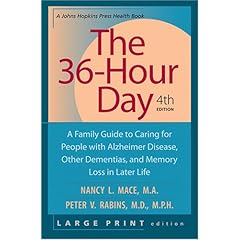 Researchers from the University of Minnesota Medical School and Brain Sciences Center at the Minneapolis VA Medical Center have identified a way to diagnose Alzheimer's and other brain diseases. Using magnetoencephalography (MEG) and various mathematic algorithms, the researchers were able to identify and classify the brain disease in 142 research subjects that had been previously diagnosed. Magnetoencephalography is a non-invasive measurement of magnetic fields in the brain and the tests last between 45-60 seconds.
Researchers from the University of Minnesota Medical School and Brain Sciences Center at the Minneapolis VA Medical Center have identified a way to diagnose Alzheimer's and other brain diseases. Using magnetoencephalography (MEG) and various mathematic algorithms, the researchers were able to identify and classify the brain disease in 142 research subjects that had been previously diagnosed. Magnetoencephalography is a non-invasive measurement of magnetic fields in the brain and the tests last between 45-60 seconds."This elegantly simple test allows us to glimpse into the brain as it is working," Apostolos P. Georgopoulos said. "We were able to classify, with 100 percent accuracy, the various disease groups represented in the group of research subjects."
This study should be of particular interest to anyone that is genetically predisposed to Alzherimer's and other forms of Dementia.
Currently, brain diseases are diagnosed with behavioral exams, psychiatric interviews, and neuropsychological testing.
Read more about this study being conducted at the University of Minnesota Medical School and Brain Sciences Center on the next page.
Original Source U of M Researchers Discover Noninvasive Diagnostic Tool for Brain Diseases
Additional Source Institute of Physics
Until recently physicians have had to rely on time-consuming and uncertain behavioural examinations to diagnose the onset of brain diseases such as multiple sclerosis, Alzheimer's and schizophrenia.
Research published next week in the Institute of Physics' Journal of Neural Engineering suggests that we could soon be able to diagnose the onset of many brain diseases by analysing the tiny magnetic fields produced by neuron activity in the brain.
This is a significant breakthrough for neurologists and psychiatrists as it could present a fast and simple screening test for brain diseases, while also helping differentiate between different brain diseases that have similar symptoms.
A team of investigators from the University of Minnesota Medical School in Minneapolis, US, led by Professor Apostolos P. Georgopoulos, has been analysing the magnetic charges released when neuronal populations in our brains 'couple'. By comparing the patterns of tiny magnetic charges in healthy brains to those afflicted with common diseases such as Alzheimer's, the team has been able to identify the patterns commonly associated with these debilitating diseases.
A process called magnetoencephalography (MEG), a non-invasive measurement of magnetic fields in the brain, has been used to examine a total of 142 volunteers during tests which last between 45-60 seconds. The team first studied 52 volunteers to find patterns of neural activity that could identify all the different illnesses.
They then tested a further 46 patients to see whether the patterns found from the first group could accurately diagnose disease within a second group. Here, many of the predictors found from the first set of participants also correctly diagnosed more than 90% of subjects in the second sample.
Professor Georgopoulos said, "We want to continue and acquire data from a large number of subjects - patients and matched controls. The throughput of this MEG test is large so we can continue a high rate of testing and we hope that clinical applications can become a reality in a year or two."
Diagnosing illnesses like Alzheimer's has always been very difficult, particularly in the early stages. Physicians are forced to rely on conversations with patients, memory tests, physical examinations and, occasionally, brain scans. It is sometimes not until post-mortem or after a biopsy that cause of illness can be confirmed.

Magnetoencephalography

No comments:
Post a Comment